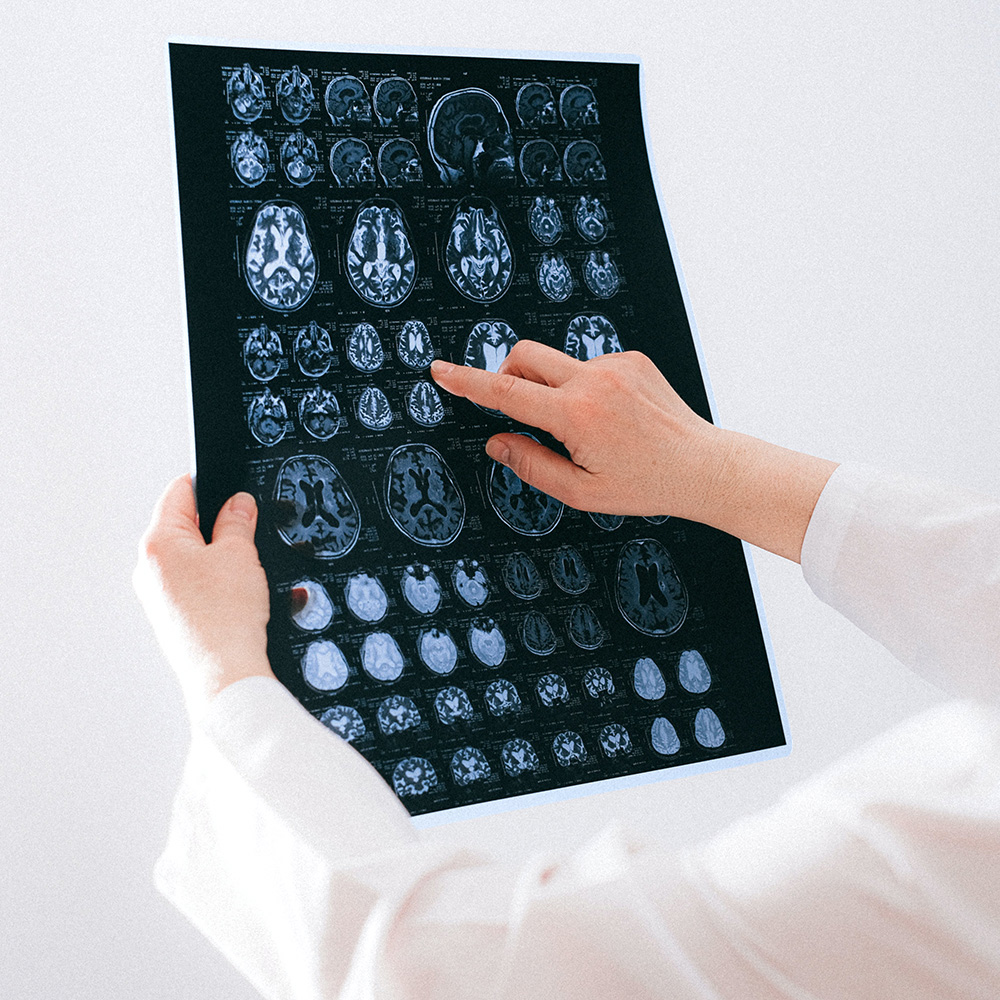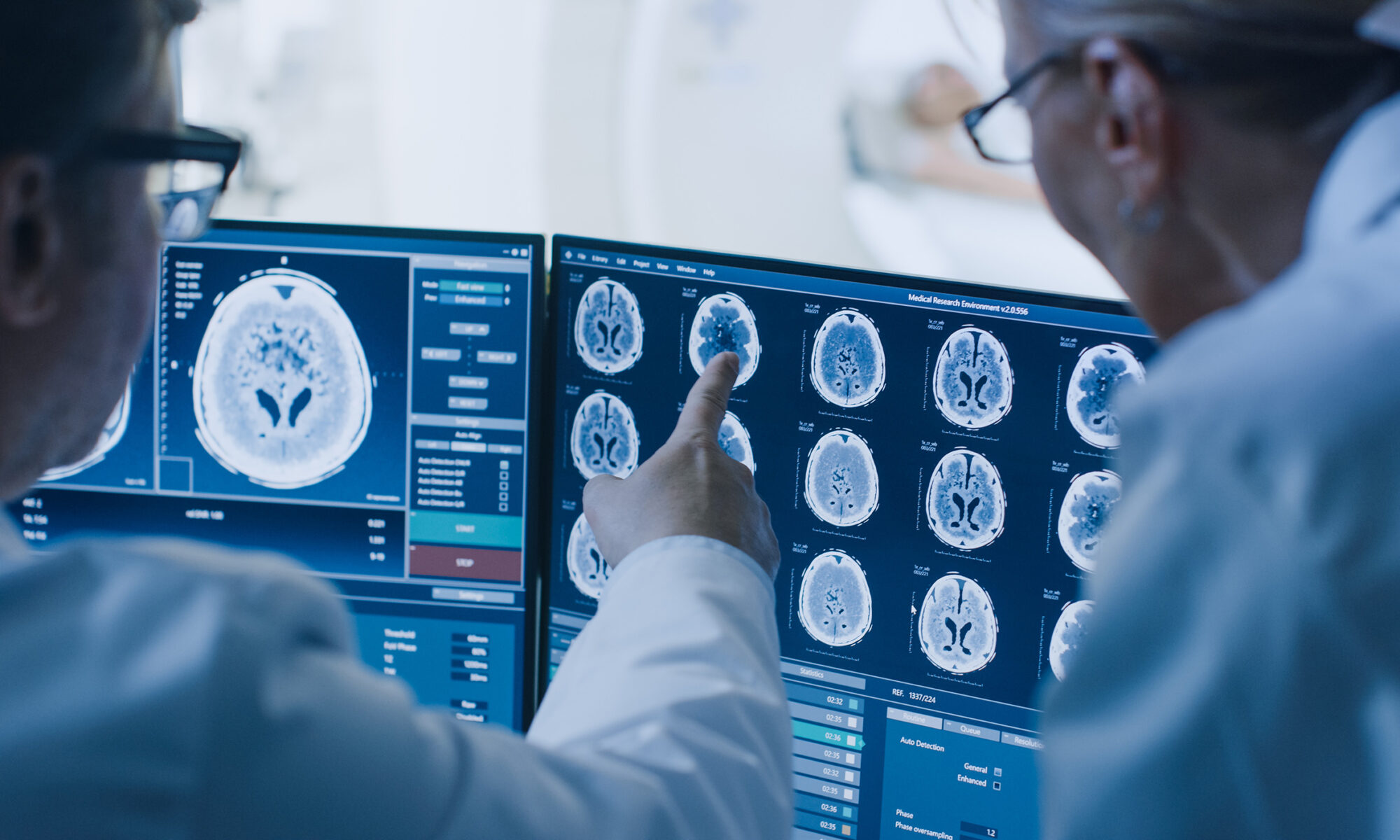
Glioblastoma
Glioblastoma is a brain-derived tumor that develops form the glial cells of the brain. Due to the very poor prognosis, this aggressively growing tumor is classified as grade IV according to the WHO classification of tumors of the central nervous system.
The average age of those affected is between 45 and 70 years, but younger patients may also be affected. Men are about twice as likely to be affected as women.
Glioblastomas can be born entirely new or through progressive dedifferentiation from fewer malignant tumor types. The most common localization is the cerebrum, whereas in the cerebellum, brain stem and spinal cord glioblastomas are rare.

Symptoms
Within a few weeks to months, symptoms steadily increase. The symptoms can vary depending on the location:
- Persistent Headache, Dizziness, Regurgitation
- Paralysis, Blurred vision, Disturbance of Speech
- New Epileptic Seizures
- Psychological Changes (e.g. noticeable personality changes, apathy)

Diagnosis
Imaging procedures such as MRI (magnetic resonance imaging) or CT scan (computed tomography scan) are used for the diagnosis, which is ultimately confirmed by the analysis of extracted tumor issue. The glioblastoma is often already larger than 2 cm in diameter at diagnosis.

Therapeutic Approaches
As a therapy, the neurosurgical operation with reduction of the main mass of the tumor is currently used, supported by radiation and chemotherapy. Tumor reduction can slow the progression of the disease, but it cannot permanently prevent it. A complete removal of the tumor is practically impossible since individual tumor cells rapidly infiltrate the healthy brain tissue. Therefore, glioblastoma is usually recurrent within one year even after successful therapy.
Course of Disease
Neoplastic degeneration (by genetic mutation) of the stem and progenitor cells along the lateral ventricle is believed to produce the tumors of the cerebrum. Most mutations involve signal transduction pathways that determine the growth behavior of stem and progenitor cells. This leads to an uncontrolled cell proliferation.
Glioblastoma interacts strongly with the surrounding, healthy cells of the brain. With increasing growth, the gliomas initiate their own blood supply, colonize new brain areas, actively suppress the immune system of the brain and thus escape the attacks of immune cells.
Statistically, the survival time of glioblastoma patients after diagnosis is on average 12-14 months but may be significantly higher in individual cases. The cause of death is ultimately the tumor mass as well as the tumor-induced accumulation of fluid in the brain tissue, which depresses the vital areas.
